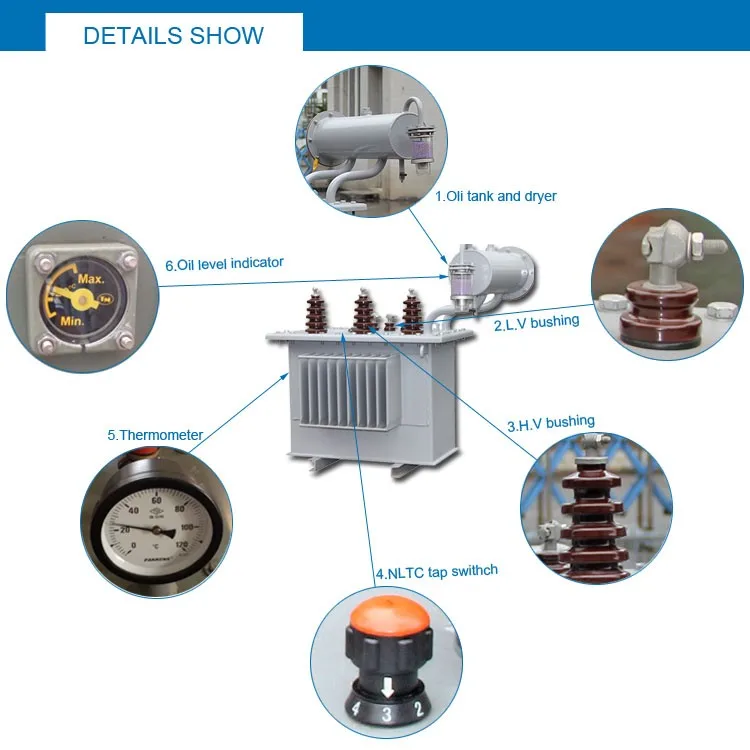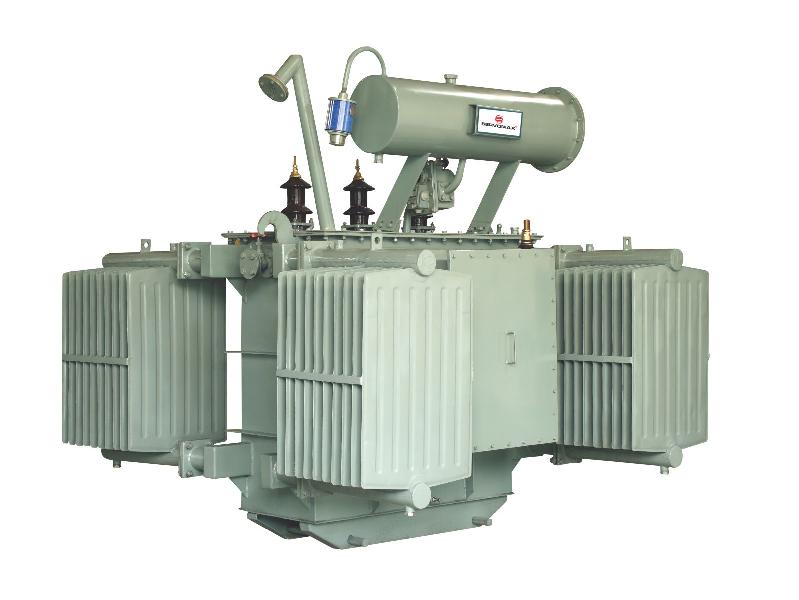Basics Of Transformer Design
BASICS OF TRANSFORMER DESIGN
Introduction :
it’s simply a device used for either stepping-up or stepping down an applied input AC through magnetic induction in between its two windings.
Basically a transformer will have the following main components:
1.Iron core stampings (configured either as U/T or E/I, generally the later is used more extensively).
2.Central plastic or ceramic bobbin surrounded by the above iron core stampings.
3. Two windings (electrically isolated and magnetically coupled) using superenameledcopperwiremadeoverthebobbin.
4. Normally the winding which is designated to receive the input supply is termed as the “Primary” and the winding which in response to this input produces the required induced voltage as the
output is termed as the “secondary” winding.
Designing your own transformer as per a specific application can be interesting, but not feasible without calculating the various parameters typically involved with them. The following discussion will take you through a few important steps and formulas and explain how to make a transformer. -
See more at:
Calculating the Core Area Of the Transformer (CA):
The Core Area is calculated through the formula given
below:
CA = 1.152 ×√ (Output Voltage × Output Current) in cm2
Calculating Turns Per Volt(TPV) :
CA = 1.152 ×√ (Output Voltage × Output Current) in cm2
Calculating Turns Per Volt(TPV) :
It is done with the following formula:
TPV = 1 / (4.44 × 10-4 × CA × Flux Density × AC frequency) -
where the frequency will depend on the particular country’s specifications (either 60 or 50 Hz), the standard value for the flux density of normal steel stampings may be taken as 1 Weber/sq.m, for ordinary steel material the value is 1.3 Weber/sq.m
Primary Winding Calculation :
Basically three important parameters needs to be figured out while calculating the primary winding of a transformer, they are as follows:
1.Current through the primary winding
2.Number of turns of the primary winding
3.Area of the primary winding
Let’s trace out each of the above expressions:
Primary Winding Current = (Secondary Volts × Secondary Current) ÷ (Primary
Volts × Efficiency),
The average value for the efficiency of any transformer may be presumed to be 0.9 as a standard figure.
Number of Turns = TPV × Primary Volts
Primary Winding Area = Number of Turns / Turns per Sq. cm
Secondary Winding Calculation :
TPV = 1 / (4.44 × 10-4 × CA × Flux Density × AC frequency) -
where the frequency will depend on the particular country’s specifications (either 60 or 50 Hz), the standard value for the flux density of normal steel stampings may be taken as 1 Weber/sq.m, for ordinary steel material the value is 1.3 Weber/sq.m
Primary Winding Calculation :
Basically three important parameters needs to be figured out while calculating the primary winding of a transformer, they are as follows:
1.Current through the primary winding
2.Number of turns of the primary winding
3.Area of the primary winding
Primary Winding Current = (Secondary Volts × Secondary Current) ÷ (Primary
Volts × Efficiency),
The average value for the efficiency of any transformer may be presumed to be 0.9 as a standard figure.
Number of Turns = TPV × Primary Volts
Primary Winding Area = Number of Turns / Turns per Sq. cm
Secondary Winding Calculation :
As explained above, with the help of Table A you
should be able to find the SWG of the wire to be used for the
secondary winding and the TPV simply by matching them with
the selected secondary current.
The Number of turns for the secondary winding is also calculated as explained for the primary winding, however considering high loading conditions of this winding, 4 % extra turns is preferably added to the over all number of turns. Therefore the formula becomes:
Secondary Number of Turns = 1.04 × (TPV × secondary voltage),
Also secondary winding area = Secondary Turns / Turns per sq. cm.
Table "A"
The Number of turns for the secondary winding is also calculated as explained for the primary winding, however considering high loading conditions of this winding, 4 % extra turns is preferably added to the over all number of turns. Therefore the formula becomes:
Secondary Number of Turns = 1.04 × (TPV × secondary voltage),
Also secondary winding area = Secondary Turns / Turns per sq. cm.
Table "A"
The core size of the steel stampings to be used may be
easily found from Table B by suitably matching the relevant
information with Total Winding Area of the transformer. The
Total Winding Area thus needs to be calculated first, it’s as
follows:-
Total Winding Area = (Primary Winding Area + Total Secondary Winding Area) × Space for External Insulation
The third parameter i.e. the space for the insulation/former etc. may be taken approximately 25 to 35 % of the sum of the first two parameters.
Gross Core Area = Core Area from Table B / 0.9 (sq.cm.) Tongue Width = √Gross Core Area (cm)
Stack Height = Gross Core Area / Tongue Width.
Case Study :
Total Winding Area = (Primary Winding Area + Total Secondary Winding Area) × Space for External Insulation
The third parameter i.e. the space for the insulation/former etc. may be taken approximately 25 to 35 % of the sum of the first two parameters.
Therefore, the above formula becomes:
Total Winding Area = (Primary Winding Area + Total Secondary Winding Area) × 1.3
Normally, a core having a square central pillar is preferred and used - other factors involved are also appropriately illustrated in the adjoining figure and calculated as follows:
Total Winding Area = (Primary Winding Area + Total Secondary Winding Area) × 1.3
Normally, a core having a square central pillar is preferred and used - other factors involved are also appropriately illustrated in the adjoining figure and calculated as follows:
Gross Core Area = Core Area from Table B / 0.9 (sq.cm.) Tongue Width = √Gross Core Area (cm)
After calculating the Tongue Width, it may be used as a
reference value and matched appropriately in Table B to
acquire the actual CORE TYPE.
Your quest regarding how to make a transformer gets over when you finally finish calculating the stack height, using the formula:
Your quest regarding how to make a transformer gets over when you finally finish calculating the stack height, using the formula:
Stack Height = Gross Core Area / Tongue Width.
Table "B"
Suppose you want to design an transformer for a 120 VA
230/12 Volts as the output. Now, simply dividing 120 by 12 gives
10 Amps, this becomes the required secondary current.
Primary Voltage = =230 Volts,
Secondary Current (Output Current) = 10 Amps.
Secondary Voltage (Output Voltage) = 12-0-12 volts, that is
equal to 24 volts. Output Frequency = 50 Hz
First we need to find the core area
CA = 1.152 ×√ (Output Voltage × Output Current) CA = 1.152 ×√ 24 × 10 = 18 sq.cm
We select CRGO as the core material.
Calculating Turns per Volt
TPV = 1 / (4.44 × 10-4 × CA × Flux Density × AC frequency) TPV = 1 / (4.44 × 10-4 ×18 × 1.3 × 50)
= 1.96
Calculating Primary Current = (Secondary Volts × SecondaryCurrent) ÷ (Primary Volts ×Efficiency)
Calculating Primary Current = (24 × 10) / (230 × 0.9) = 1.15 A,
Now, the required secondary current is 10 Amps, therefore from Table A we match an equivalent thickness of copper
Calculating Secondary Number of Turns = 1.04 × (TPV × secondary voltage),
Secondary Number of Turns = 1.04 (1.96 × 24) = 49.
Calculating Secondary winding Area Secondary Winding Area= Secondary Turns / Turns per sq. cm.
= 49 / 12.8 (From Table "A")
= 3.8 Sq.cm.
Therefore,
Total Winding Area = (Primary Winding Area + Total Secondary
Winding Area) × 1.3 Total Winding Area = (3.27 + 3.8) × 1.3
Calculating Gross Core Area = Core Area from Table B Gross Core Area = 18 / 0.9 = 20 sq.cm.
Primary Voltage = =230 Volts,
Secondary Current (Output Current) = 10 Amps.
Secondary Voltage (Output Voltage) = 12-0-12 volts, that is
equal to 24 volts. Output Frequency = 50 Hz
First we need to find the core area
CA = 1.152 ×√ (Output Voltage × Output Current) CA = 1.152 ×√ 24 × 10 = 18 sq.cm
We select CRGO as the core material.
Calculating Turns per Volt
TPV = 1 / (4.44 × 10-4 × CA × Flux Density × AC frequency) TPV = 1 / (4.44 × 10-4 ×18 × 1.3 × 50)
= 1.96
Calculating Primary Current = (Secondary Volts × SecondaryCurrent) ÷ (Primary Volts ×Efficiency)
By matching the above current in Table A we get the
approximate Primary copper wire thickness = 21 SWG
Therefore the Number of Turns for the primary winding is calculated as
Number of Turns = TPV × Primary Volts= 1.96 × 230 = 450
Next,
Primary Winding Area = Number of Turns / Turns per Sq. cm
Primary Winding Area = 450 / 137 (from Table A)= 3.27 sq.cm.
Therefore the Number of Turns for the primary winding is calculated as
Number of Turns = TPV × Primary Volts= 1.96 × 230 = 450
Next,
Primary Winding Area = Number of Turns / Turns per Sq. cm
Primary Winding Area = 450 / 137 (from Table A)= 3.27 sq.cm.
Now, the required secondary current is 10 Amps, therefore from Table A we match an equivalent thickness of copper
Calculating Secondary Number of Turns = 1.04 × (TPV × secondary voltage),
Secondary Number of Turns = 1.04 (1.96 × 24) = 49.
Calculating Secondary winding Area Secondary Winding Area= Secondary Turns / Turns per sq. cm.
= 3.8 Sq.cm.
Therefore,
Total Winding Area = (Primary Winding Area + Total Secondary
Winding Area) × 1.3 Total Winding Area = (3.27 + 3.8) × 1.3
Calculating Gross Core Area = Core Area from Table B Gross Core Area = 18 / 0.9 = 20 sq.cm.
Next,
the Tongue Width = √Gross Core Area (cm) Tongue Width becomes = √20= 4.47 cm.
Consulting Table B yet again through the above value we finalize the core type to be 6 (E/I) approximately.
Finally the Stack Height = Gross Core Area / Tongue Width Stack Height = 20 / 4.47 = 4.47 cm
Some Information about the Transformer for to understand more.
Produced By Ghuna & Bala Power plant Technical Collection and Studies
the Tongue Width = √Gross Core Area (cm) Tongue Width becomes = √20= 4.47 cm.
Consulting Table B yet again through the above value we finalize the core type to be 6 (E/I) approximately.
Finally the Stack Height = Gross Core Area / Tongue Width Stack Height = 20 / 4.47 = 4.47 cm
Some Information about the Transformer for to understand more.
 |
| Instrument details of the transformer |
GB Power Tech
Please comment if you have Questions .







Comments
Post a Comment